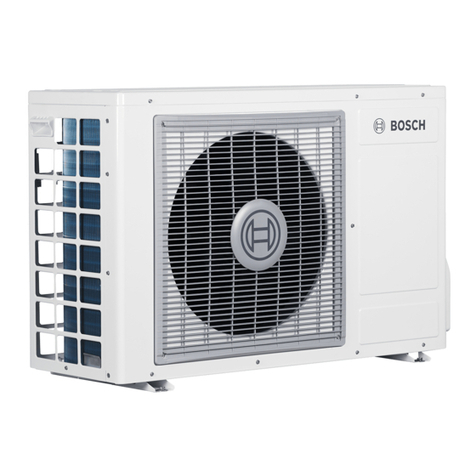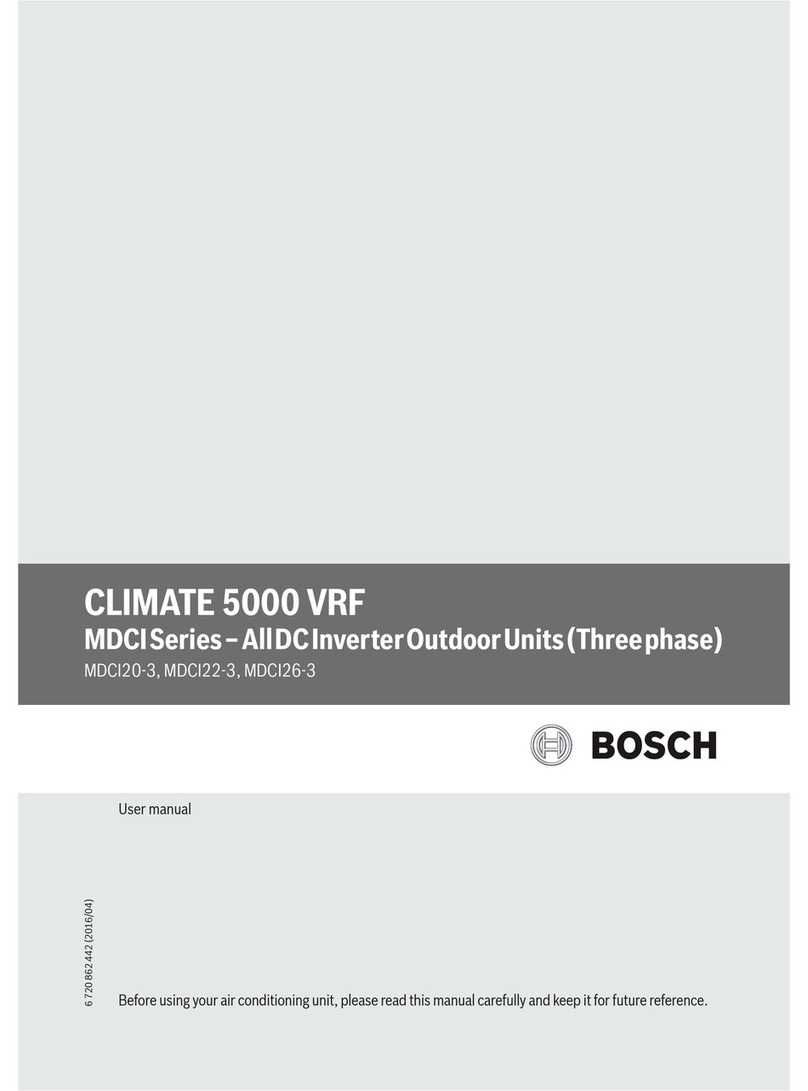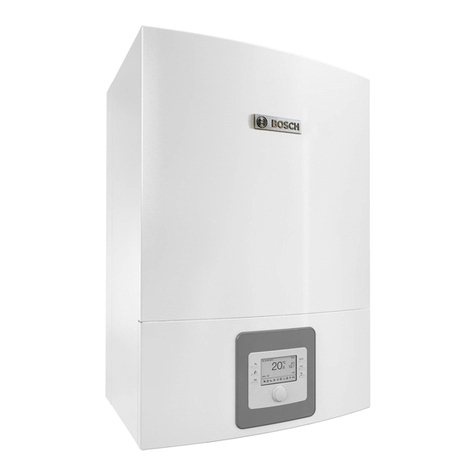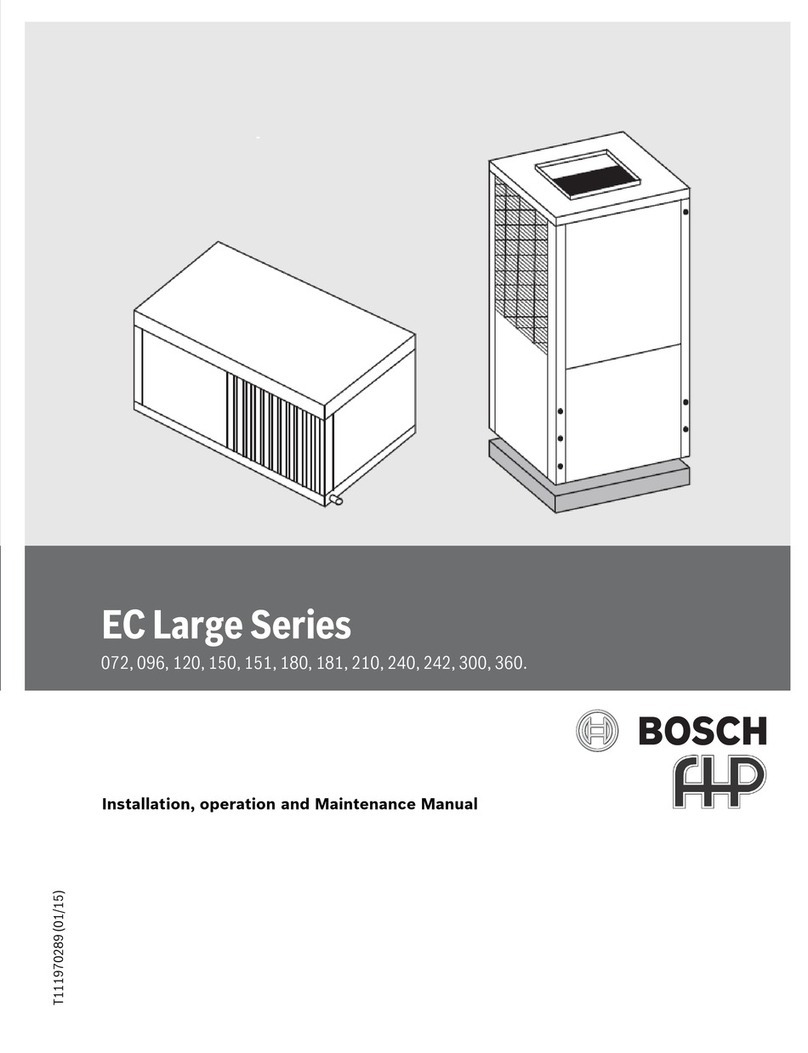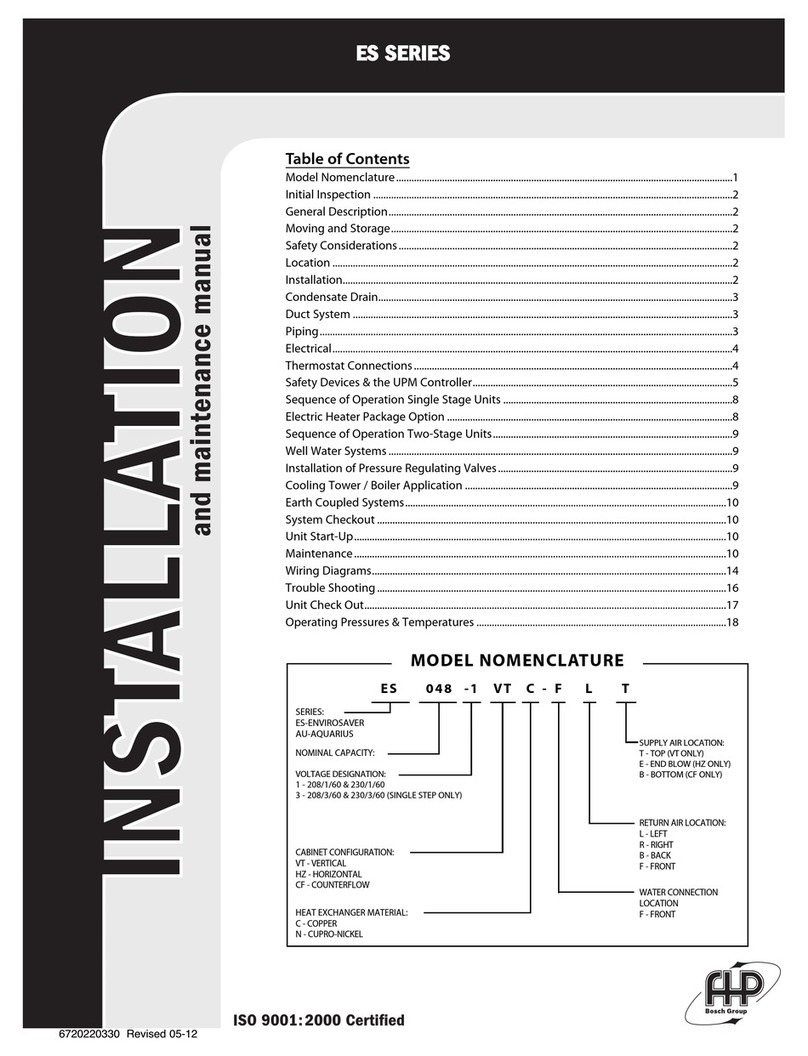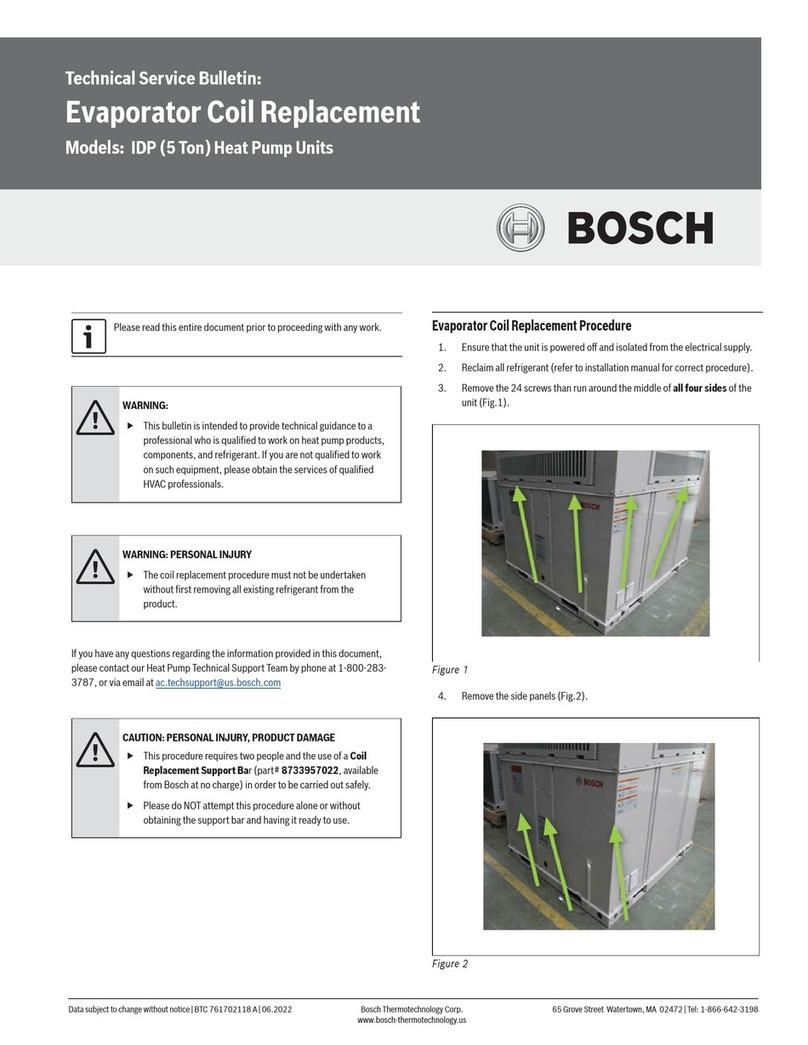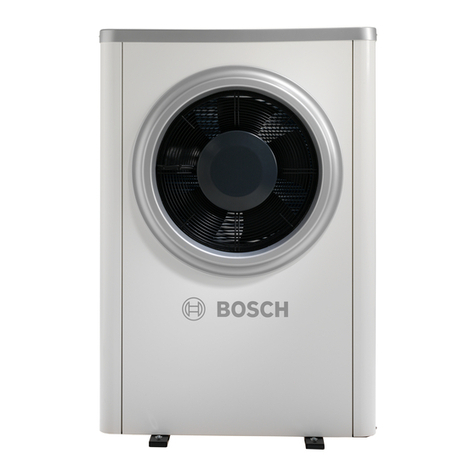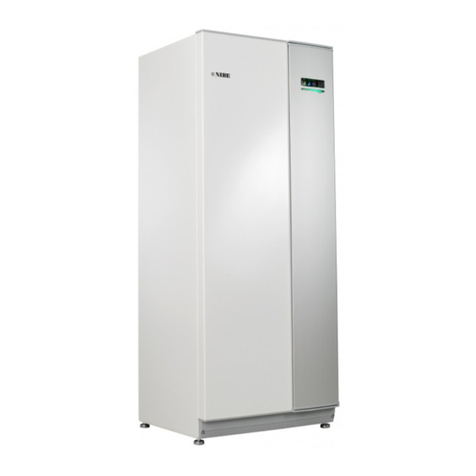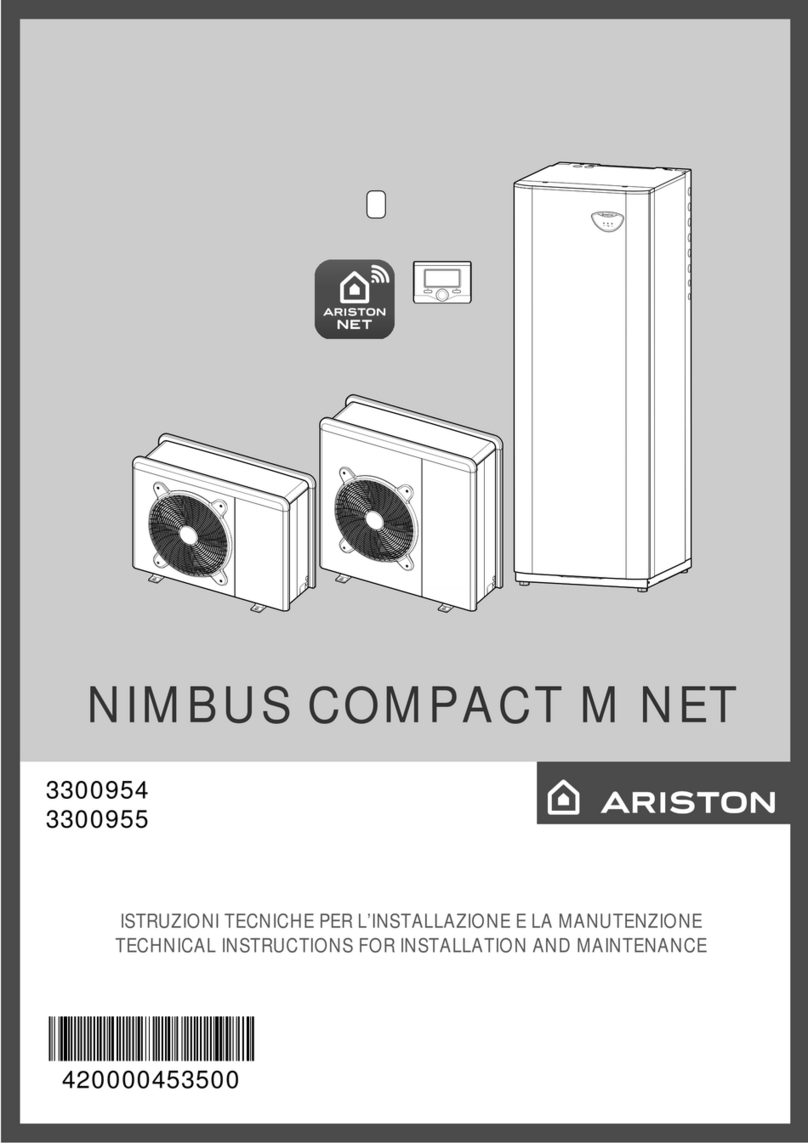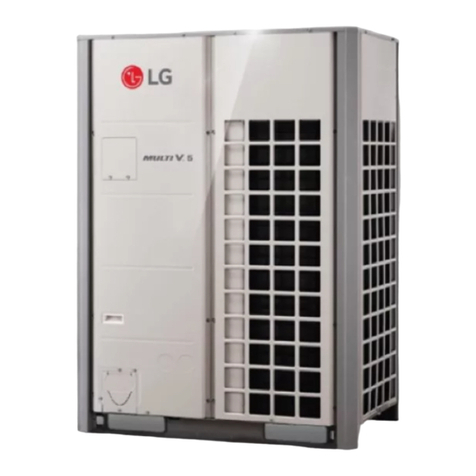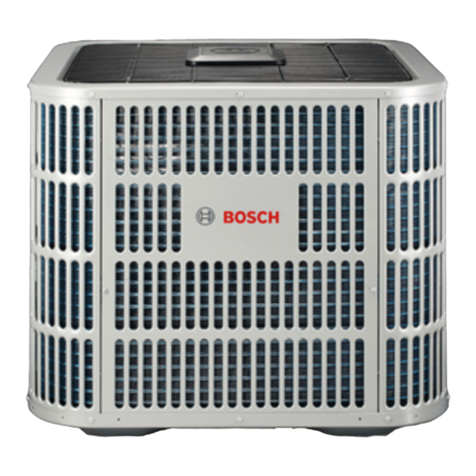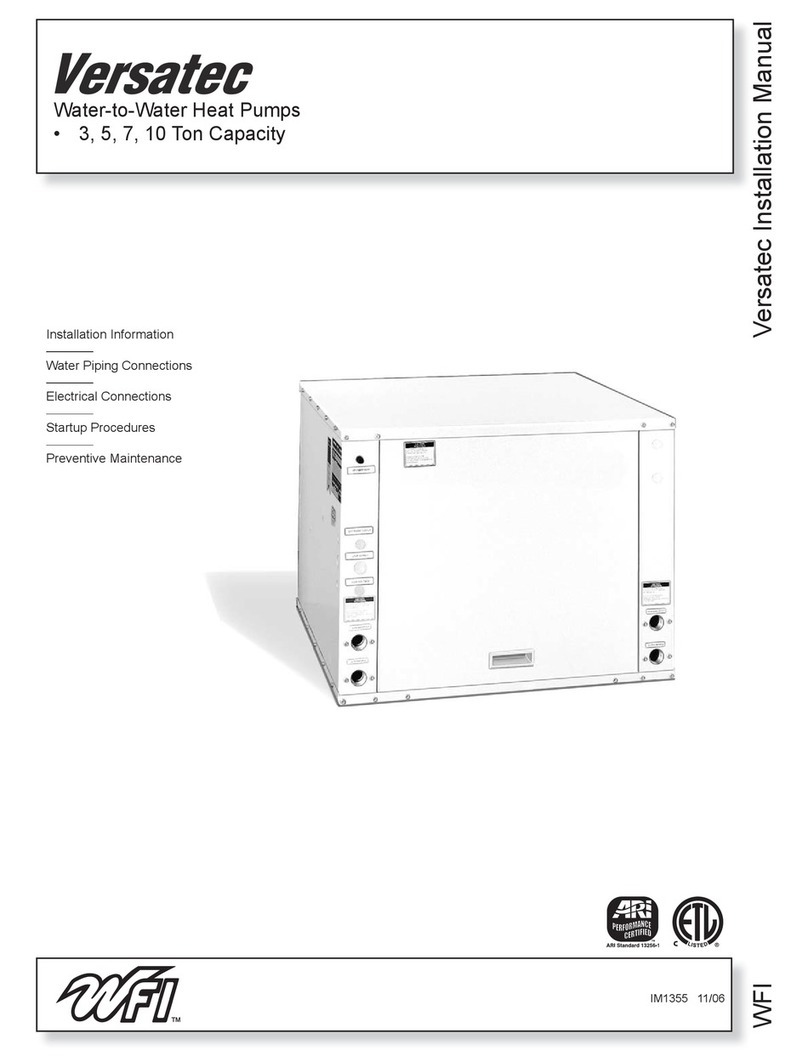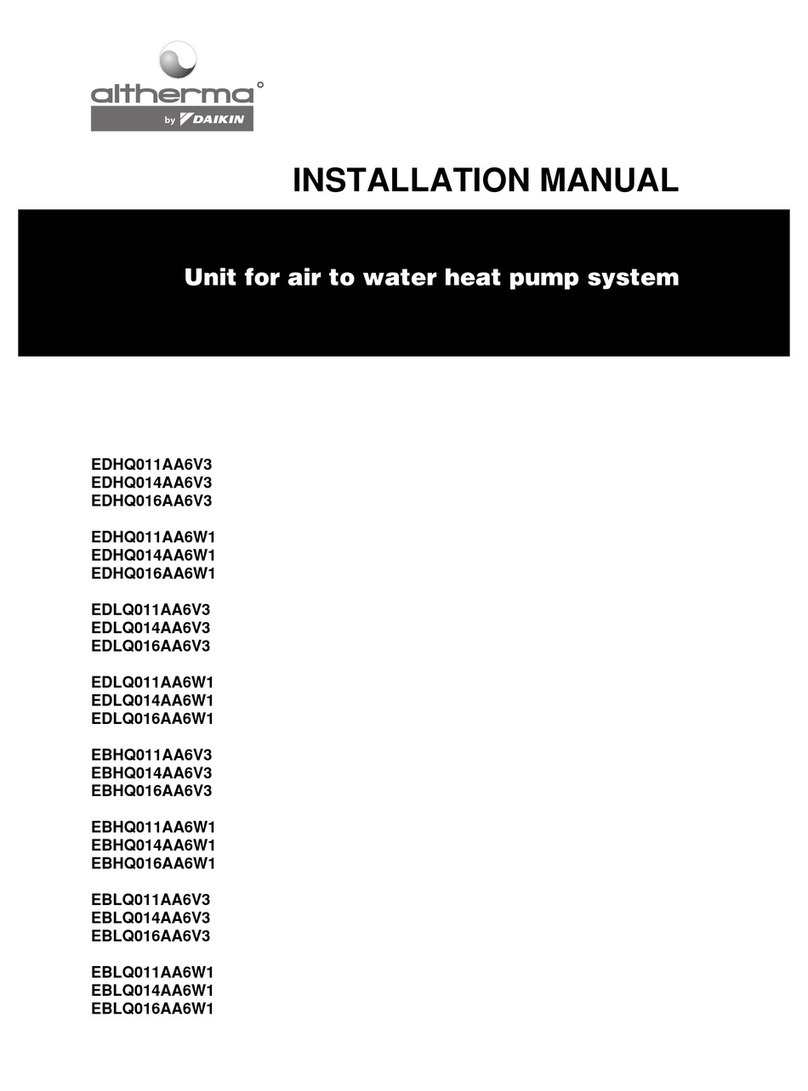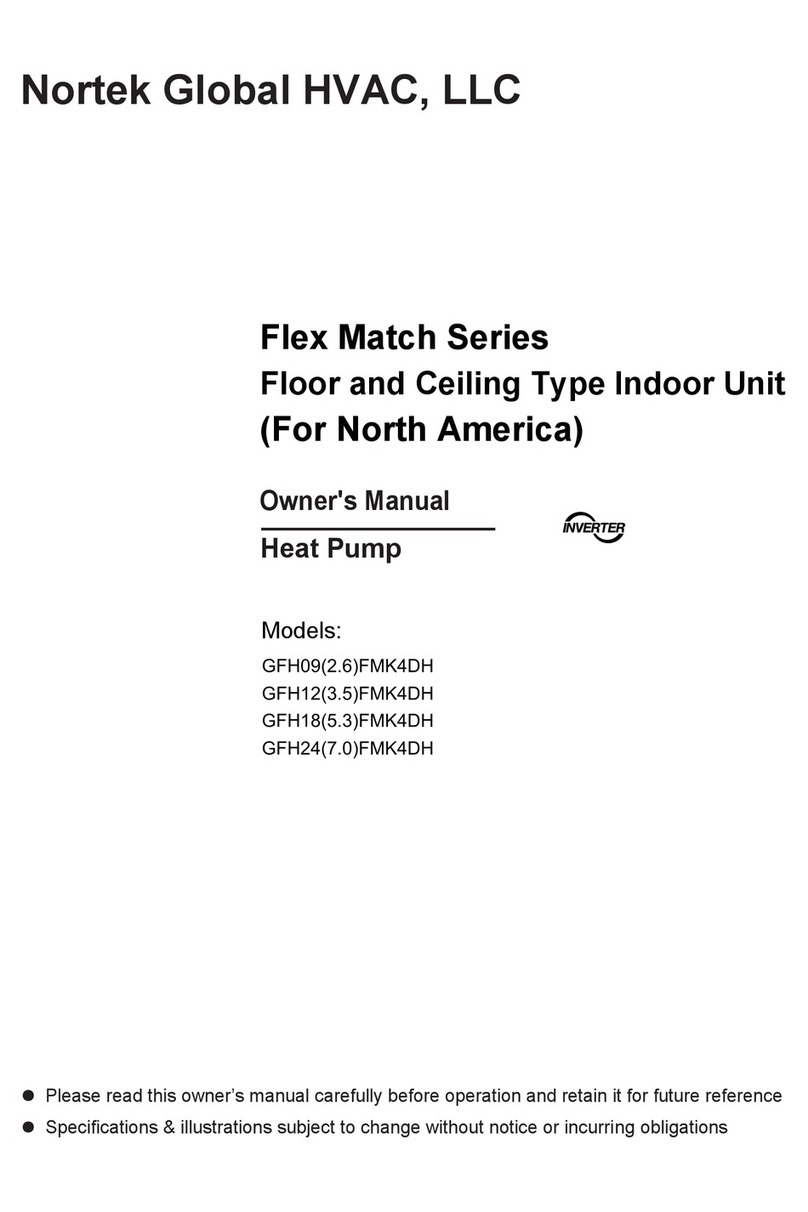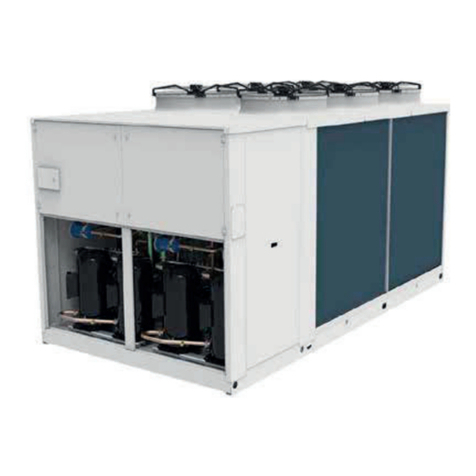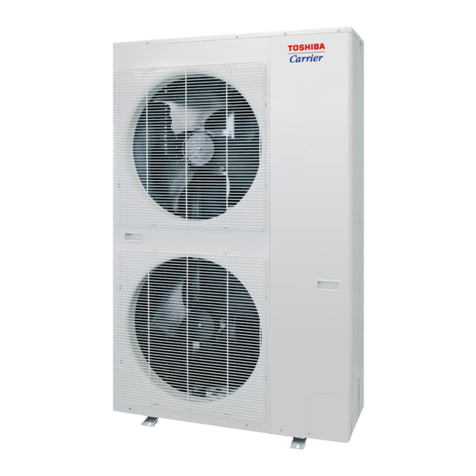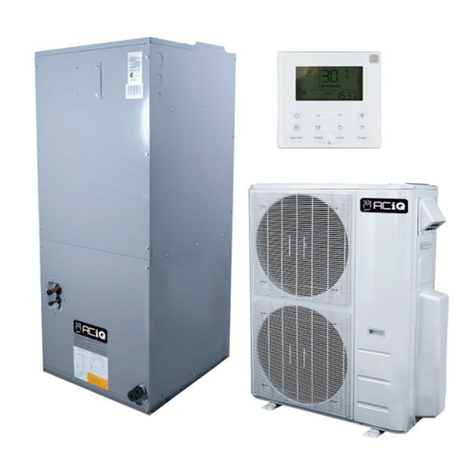
Subject to change without prior notice Revised 03-11
6 720 220 046
12 TA Series
cooling to the loop water thus maintaining a constant
supply temperature to the unit. When utilizing open
cooling towers, chemical water treatment is mandatory
to ensure the water is free from corrosive elements. A
secondary heat exchanger (plate frame) between the
unit and the open cooling tower may also be used. It is
imperative that all air be eliminated from the closed loop
side of the heat exchanger to insure against fouling.
In the heating mode, heat is absorbed from the
water loop. A boiler can be utilized to maintain the
loop at the desired temperature.
Water piping exposed to extreme low ambient
temperatures is subject to freezing.
Consult the specication sheets for piping sizes. Teon
tape sealer should be used when connecting to the unit
to insure against leaks and possible heat exchanger
fouling. Do not overtighten the connections. Flexible
hoses should be used between the unit and the rigid
system to avoid possible vibration. Ball valves should be
installed in the supply and return lines for unit isolation
and unit water ow balancing. Pressure/temperature
ports are recommended in both supply and return lines
for system ow balancing. Water ow can be accurately
set by measuring the water-to-refrigerant heat
exchangers water side pressure drop. See specication
sheets for water ow vs. pressure drop information.
No unit should be connected to the supply or return
piping until the water system has been completely
cleaned and ushed to remove any dirt, piping chips or
other foreign material. Supply and return hoses should
be connected together during this process to ensure the
entire system is properly ushed. After the cleaning and
ushing has taken place the unit may be connected to
the water loop and should have all valves wide open.
EARTH COUPLED SYSTEMS
(Figure #12)
Closed loop and pond applications require specialized
design knowledge. No attempt at these installations
should be made unless the dealer has received
specialized training. Utilizing the Ground Loop
Pumping Package (GLP), makes the installation easy.
Anti-freeze solutions are utilized when low evaporating
conditions are expected to occur. Refer to the GLP
installation manuals for more specic instructions.
Earth Coupled Systems
any knownhazards exist in your area,we recommend
propertesting to assure the wellwater quality issuitable
forusewith water source equipment. In conditions
anticipating moderate scaleformation or in brackish water
acupro-nickel heat exchangeris recommended.In well
water applications waterpressure must always be
maintained in the heat exchanger.This can be
accomplishedwith eithercontrol valve or a bladdertype
expansiontank. Whenusinga singlewater well tosupply
both domestic waterandtheheat pump care mustbe
taken to insure that the well can provide sufcient ow for
both.Inwell waterapplications a slow closingsolenoid
valve must beused to preventwater hammer.
Solenoid valves should be connected across Y1 and
C1 on the interface board for all. Make sure that the
VA draw of the valve does not exceed the contact
rating of the thermostat.
INSTALLATION OF PRESSURE
REGULATING VALVES
Pressure regulatingvalves are used to increase ordecrease
water ow through the heat pump in response to
refrigerant pressure. In some cases more water may be
requiredinheatingthanincooling,orviceversa.Withthe
Bosch heat pumpsthese valvesare not required.However,
if installed,a pairof valves are requiredfor proper
operation,one valve forcooling(direct acting) and another
valve forheating (indirectacting). A refrigeranttapis
provided in the refrigerant line located betweenthe
reversing valve and thewater-to-refrigerant heat exchanger
forproper monitoring of the refrigerant pressures.
The discharge water from the heat pump is not
contaminated in any manner and can be disposed of
in various ways depending on local building codes
(i.e. discharge well, dry well, storm sewer, drain
eld, stream or pond, etc.) Most local codes forbid
the use of a sanitary sewer for disposal. Consult your
local building and zoning department to insure
compliance in your area.
COOLING TOWER/BOILER SYSTEMS
(Figure #11)
The cooling tower and boiler water loop temperature
is usually maintained between 50˚ F to 100 ˚ F to
assure adequate cooling and heating performance.
In the cooling mode, heat is rejected from the unit into
the water loop. A cooling tower provides evaporative




















